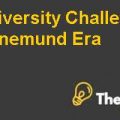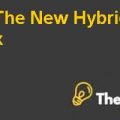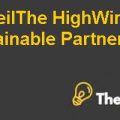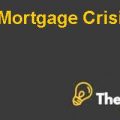Financial and Environmental Impact Analysis of Sustainable Retrofitting Case Solution
Q.3
The exit cap rate is calculated to compute the value of the property at the end of the holding period, which can be done through the capitalization of annual income for the property. As the exit cap rate generates a future value of the property; therefore, the company should forecast the exit cap rate first, in order to calculate the future values. (Pinkasovitch, 2014)
The higher exit cap rate will decrease the net value of the property whereas, the lower exit cap outcomes are entirely different from the higher exit cap rates. The 7.5% exist cap computed by the company seems appropriate for it, as it generates a medium valuation for the property.
The exit cap rate seems prudent as the company involves uncertainty in the cash flows. The industry data should be essential for the prediction of future cash flows and future cap rates. If the exit cap rate is higher than7.5%, then it will reduce the net present value of the property to $1.9 million as well as the IRR of the projects will reduce from 43.5% to 42.5%.
List of Options to Pursue (i.e., different scenarios--two suggested)
At the base case assumption of escalation rates, the NPV generated by the company is $1.9 million. In addition to this, the company should proceed with positive NPV projects with a total investment of $0.5 million, which tends to generate an internal rate of return of 43.5% by the company. In this option, the company would forgo the dishwasher option and high-efficiency furnace.
The second option for the company is to reduce the escalation rates to 90%, which would generate net present value of $2.8 million. In this option, the company could have to make a capital expenditure of $0.52 million. The internal rate of return produced by the projects will be 340%. In this option, the same negative NPV generating project will bring in positive NPVs, therefore the company should proceed with those projects.
Another option available to the company is to enhance the inflation rates by 140%, which in turn would increase the project’s net present value to $3.1 million. The internal rate of return generated by the company is 303%, which indicates that the project is favorable to the company. In this option, the dishwasher option 1 project will be converted from negative NPV to positive NPV, therefore the company should proceed with that project and it should also enhance the its share holders’ value.
The profitability index will be useful for the evaluation and categorization of the company’s projects. The higher NPV generating over less amount of capital investment will provide the company with higher benefits. The company can easily invest its funds in better investment venues as indicated by the profitability index.
The company can easily manage its funds through little exposure to capital rationing as the company would generate cash flows on annual basis. Therefore, the company has annual limitations for capital expenditure, which could be because of the single period and multi-period rationing. However, the single-period rationing can be managed through profitability index, but in the case of multi-period capital rationing; linear programming will be useful.(GURAU, 2012)
However, the company is committed to sustain a sound environmental position and adopt those investments, which are highly environmentally friendly, but it has to maintain the financial position as well. Therefore, the company cannot proceed with those projects, which are environmentally friendly.However, the commercial viability of such projects is very low.........................
Financial and Environmental Impact Analysis of Sustainable Retrofitting Case Solution
This is just a sample partial case solution. Please place the order on the website to order your own originally done case solution.













